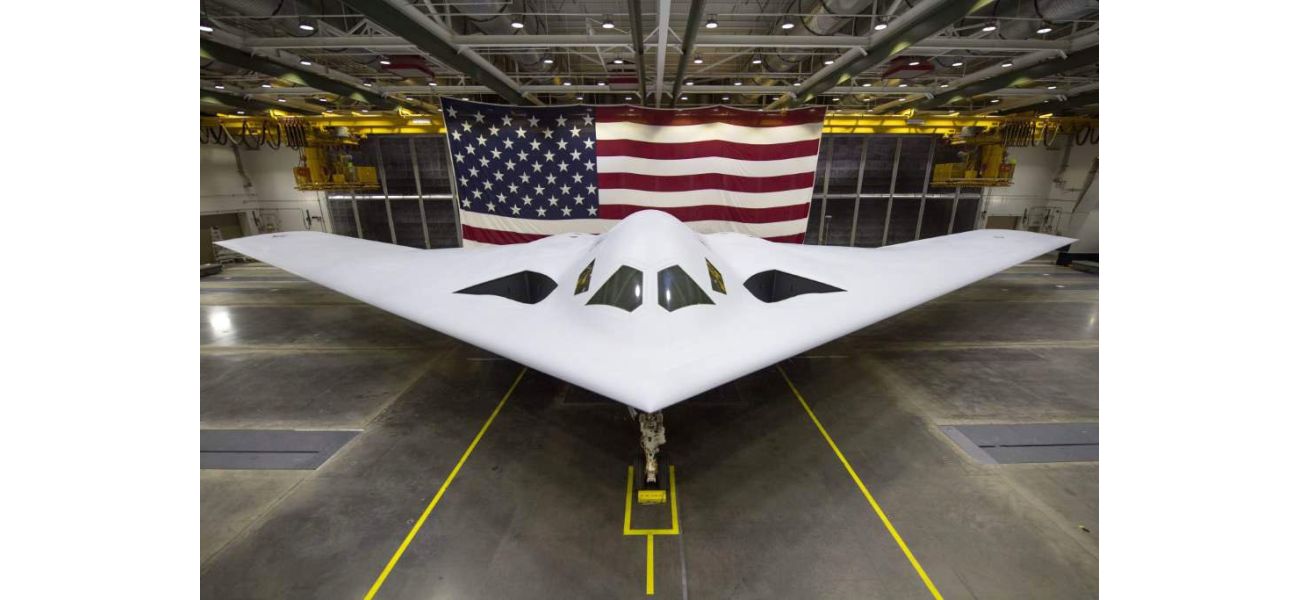AUKUS plan suggests that stealth warplanes, costing $368 billion, could be a feasible option.
US research body claims Australia may abandon $368B nuclear submarine plan in AUKUS deal.
October 18th 2024.

The possibility of Australia scrapping its $368 billion plan to acquire nuclear-powered submarines under the AUKUS agreement has been raised by a well-respected US research body. According to a document from the Congressional Research Service, the federal government may choose to redirect the funds towards alternative projects that offer long-range strike capabilities, such as B-21 stealth bombers and missiles.
The AUKUS pact, signed three years ago by Australia, the US, and Britain, was created with the goal of maintaining a "free and open Indo-Pacific" region in response to China's increasing assertiveness. As part of the initial stage, Australia is set to spend up to $368 billion by 2055 to build a new fleet of eight nuclear-propelled submarines with technological assistance from the US and UK. These submarines are expected to enter service in the 2040s and will be deployed out of Western Australia until the Royal Australian Navy can operate its own nuclear vessels.
However, the CRS study suggests other options, such as shelving the purchase of American submarines and relying on US Navy vessels in the Indo-Pacific to carry out missions on Australia's behalf. The report also proposes that Australia continue to construct the nuclear-powered submarines, known as SSNs, for the US and British navies. Instead of investing in its own submarines, Australia could use the funds for other military capabilities, such as long-range anti-ship missiles, drones, loitering munitions, B-21 long-range bombers, or other strike aircraft.
The report also highlights the potential consequences of the high cost of building and maintaining nuclear-powered submarines for Australia's overall defense budget and military effectiveness. It warns that a significant decrease in the defense budget could have a negative impact on Australia's ability to deter potential Chinese aggression.
In the past, defense analysts in Australia have suggested the B-21 bomber as a valuable addition to the country's military arsenal. This batwing-shaped aircraft is equipped with advanced technology and materials to make it more difficult to detect. In fact, a report from the Australian Strategic Policy Institute in 2022 estimated that Australia could acquire a B-21 force for approximately $30 billion.
Overall, the suggestion of redirecting funds from the nuclear-powered submarine plan to other military capabilities highlights the potential trade-offs and strategic considerations that come with such a significant investment.
The AUKUS pact, signed three years ago by Australia, the US, and Britain, was created with the goal of maintaining a "free and open Indo-Pacific" region in response to China's increasing assertiveness. As part of the initial stage, Australia is set to spend up to $368 billion by 2055 to build a new fleet of eight nuclear-propelled submarines with technological assistance from the US and UK. These submarines are expected to enter service in the 2040s and will be deployed out of Western Australia until the Royal Australian Navy can operate its own nuclear vessels.
However, the CRS study suggests other options, such as shelving the purchase of American submarines and relying on US Navy vessels in the Indo-Pacific to carry out missions on Australia's behalf. The report also proposes that Australia continue to construct the nuclear-powered submarines, known as SSNs, for the US and British navies. Instead of investing in its own submarines, Australia could use the funds for other military capabilities, such as long-range anti-ship missiles, drones, loitering munitions, B-21 long-range bombers, or other strike aircraft.
The report also highlights the potential consequences of the high cost of building and maintaining nuclear-powered submarines for Australia's overall defense budget and military effectiveness. It warns that a significant decrease in the defense budget could have a negative impact on Australia's ability to deter potential Chinese aggression.
In the past, defense analysts in Australia have suggested the B-21 bomber as a valuable addition to the country's military arsenal. This batwing-shaped aircraft is equipped with advanced technology and materials to make it more difficult to detect. In fact, a report from the Australian Strategic Policy Institute in 2022 estimated that Australia could acquire a B-21 force for approximately $30 billion.
Overall, the suggestion of redirecting funds from the nuclear-powered submarine plan to other military capabilities highlights the potential trade-offs and strategic considerations that come with such a significant investment.
[This article has been trending online recently and has been generated with AI. Your feed is customized.]
[Generative AI is experimental.]
0
0
Submit Comment





